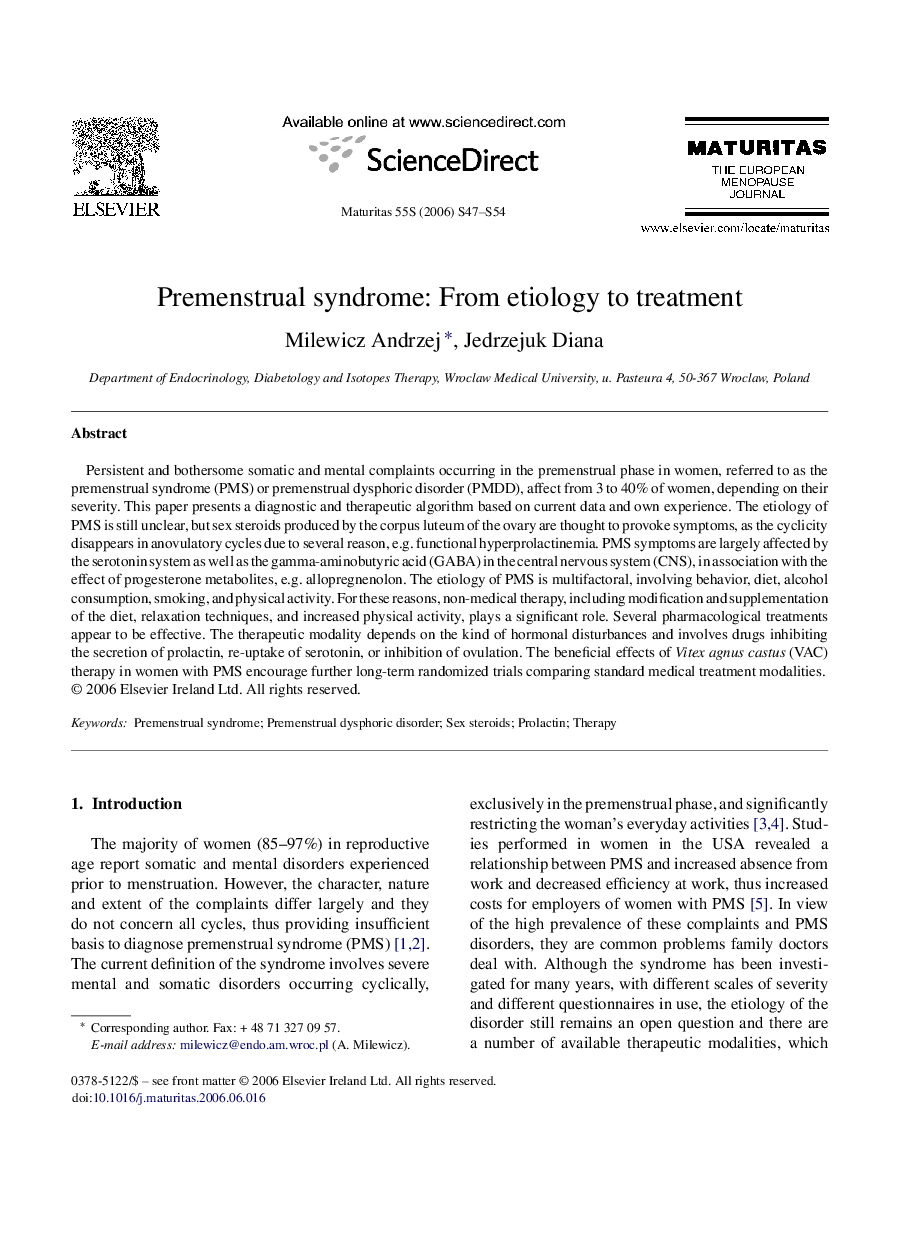| Article ID | Journal | Published Year | Pages | File Type |
|---|---|---|---|---|
| 1919064 | Maturitas | 2006 | 8 Pages |
Persistent and bothersome somatic and mental complaints occurring in the premenstrual phase in women, referred to as the premenstrual syndrome (PMS) or premenstrual dysphoric disorder (PMDD), affect from 3 to 40% of women, depending on their severity. This paper presents a diagnostic and therapeutic algorithm based on current data and own experience. The etiology of PMS is still unclear, but sex steroids produced by the corpus luteum of the ovary are thought to provoke symptoms, as the cyclicity disappears in anovulatory cycles due to several reason, e.g. functional hyperprolactinemia. PMS symptoms are largely affected by the serotonin system as well as the gamma-aminobutyric acid (GABA) in the central nervous system (CNS), in association with the effect of progesterone metabolites, e.g. allopregnenolon. The etiology of PMS is multifactoral, involving behavior, diet, alcohol consumption, smoking, and physical activity. For these reasons, non-medical therapy, including modification and supplementation of the diet, relaxation techniques, and increased physical activity, plays a significant role. Several pharmacological treatments appear to be effective. The therapeutic modality depends on the kind of hormonal disturbances and involves drugs inhibiting the secretion of prolactin, re-uptake of serotonin, or inhibition of ovulation. The beneficial effects of Vitex agnus castus (VAC) therapy in women with PMS encourage further long-term randomized trials comparing standard medical treatment modalities.
